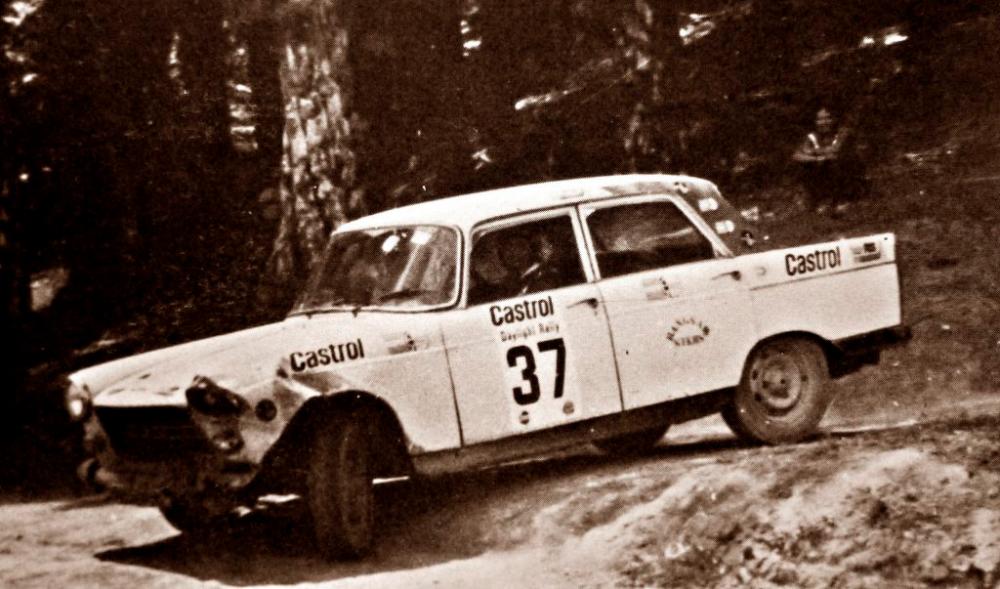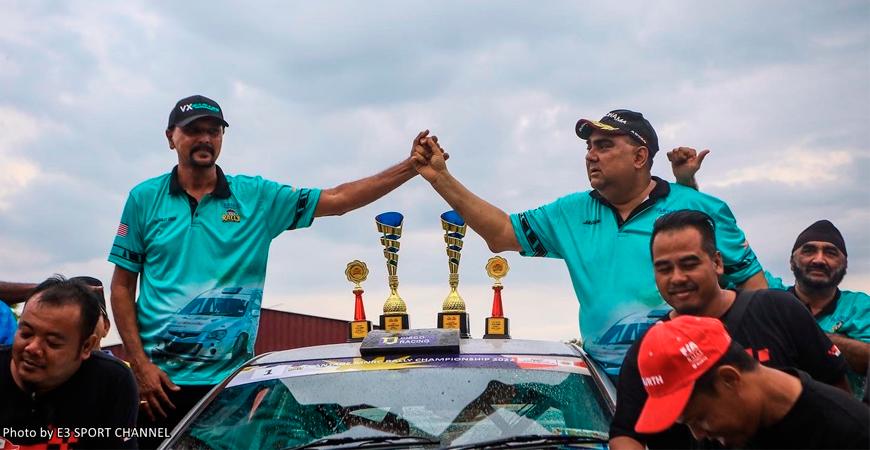FOR Karamjit Singh, age is just a number and at 60, he still has ‘The Right Stuff’ to not only compete in rallies but also become a champion. The younger generation may have physical agility and perhaps even more bravery but this uncle has experience in the sport that goes back over 35 years – before some of them were even born!
Driving a Proton Gen2, Karamjit and co-driver Jagdev Singh were today crowned champions of the 2022 VANTAGE Malaysian National Rally Championship (MNRC). ‘The Flying Sikh’ shows that his age is no barrier (nor is the age of his rallycar which is 15 years old) and has been recognized as Asia’s most successful rally driver.
Karamjit’s ascent to being No.1 rally driver in the Asia-Pacific region shows his determination to succeed in spite of periods of challenges. He began in 1984 using his father’s Peugeot 404 in the Castrol Daylight Rally and from then on, slowly gained prominence as he collected class wins. His big break came in 1988 when the newly formed PETRONAS EON Rally Team (PERT) recruited him and he was able to get the full support of a professionally-run and well-funded team.

From 1988 until 2005 when PERT was disbanded, Karamjit and his co-driver, Allen Oh, became the most successful rally duo in Malaysian history. They even got a listing in the Malaysia Book of Records. During those years, Karamjit and Allen flew the Malaysian flag in many countries as well as showed off the Proton Saga as PERT entered international events.
When the Proton R3 Team was established for motorsport as one way to promote the brand, Karamjit was the obvious choice as driver, and he continued to collect many trophies (over 500 to date). Unfortunately, Proton’s rally program ceased and Karamjit was out of a drive.
Already committed to a career as a rally driver, he spent a lot of his own money to prepare a rallycar and continue taking part in events as much as he could. It was sad that a driver of his calibre – certainly with potential to go further – was not offered support from companies. In spite of the media highlighting his plight, no sponsors came forward and it was a difficult period in his life.
“Rallying is an expensive sport and a single race in the Asia-Pacific region can cost upwards of RM400,000. Without sufficient sponsorship, the cost of participating is very difficult to meet,” he said.
But eventually, a lucky star shone on him and in 2021, a businessman by the name of Rabin Nijhar felt that he deserved support, especially considering what he had achieved. Nijhar’s company, CISCO (M) Sdn Bhd, doesn’t actually have anything to do with motorsports, unlike a tyre or oil company. CISCO provides security services, so why would it want to fund a rally team?
Perhaps other companies don’t see tangible returns for their sponsorship but Nijhar saw opportunity by teaming up with ‘The Flying Sikh’. “Opportunity is not just about getting Karamjit back on the podium but to deliver a win to the Malaysian people in these trying times. To show the rakyat that Malaysia will come back stronger than ever and with unbroken resolve,” was how Nijhar explained his decision to start CISCO Racing.
With a proper team and financial support, Karamjit and Jagdev were able to prepare their old Gen2 and enter the MNRC – and collect Karamjit’s 17th championship title. Now they can start preparing for the 2023 MNRC which is scheduled to have its first round (four are planned) in June.
However, Karamjit said that the Gen2 is already old and it’s time to get a new car, though he plans to pass the rallycar to a rookie whom he hopes to develop.
He has been loyal to Proton, which gave him his big break long ago, and even chose a Proton model to buy with his own money to continue rallying. But since Proton has not shown interest in becoming involved, he feels that it is time to consider another brand.
Nijhar suggested Perodua and Karamjit also thinks the Myvi would be a good choice. “Internationally, the current trend is to use smaller cars for rallies. The Myvi is lighter and easier to run, so why not, let’s give it a try. Who knows, Perodua might sponsor us in the future,” he said, adding that there are plans to talk to the carmaker about sponsorship.
Interestingly, when Karamjit was using the Saga, it was Malaysia’s No.1 car and now, he will be using the No.1 car of today, the Myvi. Perodua is no stranger to rallying and had its own team before. They ran a Kancil and then switched to a Kelisa and also used a Viva at one stage. Their last outings were with a Myvi before they stopped rally activities in 2009.
“At the moment, the idea is to use the Myvi to race in MNRC this year but if Perodua sponsors us, we could also use it in the Asia Pacific Rally Championship (APRC) but that requires a bigger budget. The rallycar will be modified and get a 2-litre turbocharged engine and 4WD,” Karamjit said.
Bringing back rally glory
Purnama Rally Motorsports Club (PRMC), which organises and manages the MNRC, aims to bring back the glory of rallies in the Malaysian scene, It’s commendable, especially as the outfit is very much a family-based club. It shows the passion of Jamaluddin bin Hj. Tukimin who has participated in rallies in the 1990s and 2000s, and wants to see the younger generation developing rallying skills. But they need events to take part in, and if the MNRC can get not just funding but also government support, then it has a good chance to grow.
Jamaluddin hopes that as the MNRC becomes better known, it will attract more foreign participants and our young drivers can benchmark themselves against better competitors. There’s no point being champs in Malaysia and imagining we are already great (the ‘jaguh kampung’ mentality) so having better drivers will motivate improvement by our drivers. Karamjit, for instance, had a lot of international exposure and would have gained a lot from those experiences.
Hopefully, with a new Minister of Youth & Sports, motorsports will be given attention as well and not left alone with the idea that it is a ‘rich man’s sport’. We boast of being a nation with our own cars but where motorsports is concerned, there has been little effort and support to develop racing drivers from grassroots level. It’s only left to the private sector to do this.
Back in the 1980s, rallying was far more prominent and for a couple of years, the government gave support which eased things in many areas. It was even possible to run a stage in Taman Tasik Perdana (Lake Gardens) in Kuala Lumpur and the media gave lots of daily coverage. In fact, the Tour of Malaysia – the main event of the year – was even proposed as a round for the World Rally Championship but when government support ended, it was difficult to interest the FIA.









